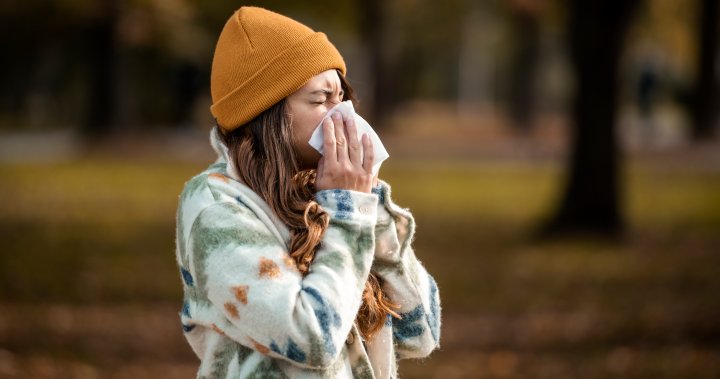
How bad could allergies get this fall? What Canadians can expect
Global News
From pollen to mould spores to dust mites, different allergens affect Canadians during the fall. Experts weigh in on what to expect this year and how to navigate the season.
Allergy sufferers, grab your tissues as fall gets underway in Canada, stirring up the spread of pollen and mould into the air.
Overall pollen counts have been increasing year over year nationally, but most parts of the country will likely see lower than normal levels in the fall during the weed season, said Daniel Coates, director of Aerobiology Research Laboratories.
In August, when ragweed season typically starts, pollen levels in Canada were the lowest they have been since 2016, said Coates, whose lab in Ottawa monitors pollen and spores across the country and predicts what the allergy season may look like.
“For the most part, we are going to see lower than typical pollen levels for the fall season,” he told Global News in an interview.
As the weather gets cooler and wetter and leaves start to fall, mould is another nuisance that can trigger some people’s allergy symptoms.
“This is the time of year when a lot of people do experience mould-induced symptoms, particularly late in the fall,” said Dr. Anne Ellis, president of the Canadian Society of Allergy and Clinical Immunology.
Western Canada in particular is seeing “moderate to high levels” of mould spores, which is more than usual for this time of the year, Coates said.
Seasonal allergies happen all year round, but respiratory viruses, like flu, COVID-19 and respiratory syncytial virus (RSV), that surge in the fall and winter can cause confusion this time of the year due to overlapping symptoms, Ellis said.





















 Run 3 Space | Play Space Running Game
Run 3 Space | Play Space Running Game Traffic Jam 3D | Online Racing Game
Traffic Jam 3D | Online Racing Game Duck Hunt | Play Old Classic Game
Duck Hunt | Play Old Classic Game











